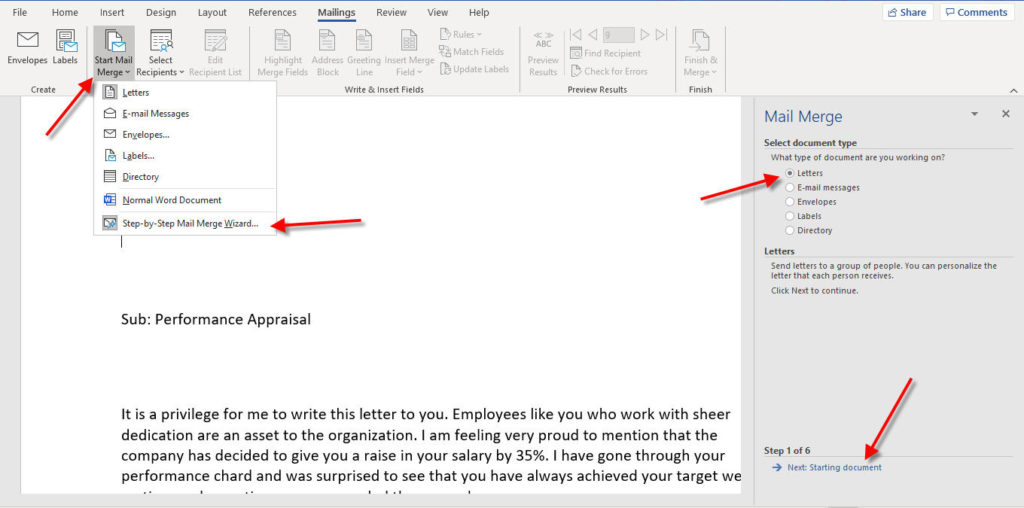
In the template Word document, start the Mail Merge feature by clicking the Mailings tab/ribbon and locate the button group labeled “ Start Mail Merge”. I have a couple of options for you later that will address that issue and make the formatting of the data perfect. NOTE: The formatting of dates and calculation results do not carry forward to the Word document. The Excel table can also contain calculations. The Excel table can contain unneeded information it won’t upset Mail Mere in the slightest. The table contains all the dynamic information used by the Word document, but it can also contain other information not accessed by Mail Merge. The elements that need to change from recipient to recipient are stored in a table in an Excel file. Several pieces of information in the Word document need to be changed for each recipient. Think of it as a template by which all other like documents are to be based. We begin with a Word document that was written as if it were to only go to a single recipient.
MAIL MERGE FORMAT PDF
The results of the Mail Merge can be sent to a printer, generated as PDF files, or automatically sent out as email messages through your default email application. The dynamic content would be data that is unique to the reader, like their name, address, medical information, or purchase history.īy placing the static information in Word, then storing the dynamic content in an Excel table, we can strategically place connectors throughout the Word document that will extract from the Excel table, one row at a time, information to complete the Word document.Įach iteration through the Excel table will produce a separate and unique version of the Word document. In the case of a form letter or mass email, the static content would be all the information that is the same for each recipient, such as announcements, agendas, news stories, etc. You are not required to only show drop-down dates in the format given in these examples.The purpose of Microsoft Word’s Mail Merge feature is to reproduce a document, envelope, email, or label which contains a combination of static ( i.e., same every time) and dynamic content. Note: The date formats showcased (MMMM, d, yyyy and M/d/yyyy) are interchangeable across date fields.
MAIL MERGE FORMAT CODE
Field Attribute is left blank where the display control does not affect the code syntax. The following table displays merge code syntax and code output for each field type. Press + to display the code syntax view and the code output view.
MAIL MERGE FORMAT UPDATE
Ensure you update both sides of the code using F9. You can choose to display either the Mail Merge code itself or the code output.

Note: The aliases for cross-referenced applications or sub-forms need to come from the field in the source application and not from the alias of the cross-referenced application itself. The attributes applied to a field may also affect the merge code syntax.įor example, a text field does not require any special syntax, but a text area that allows for text formatting requires the code syntax to support HTML. Different field types require different code syntax when you build a Mail Merge export template.įor example, you can include cross-referenced applications and sub-forms in the Mail Merge code to pull data from related records if they are encased by a TableStart and TableEnd, while a numeric field does not require any special syntax.


 0 kommentar(er)
0 kommentar(er)
